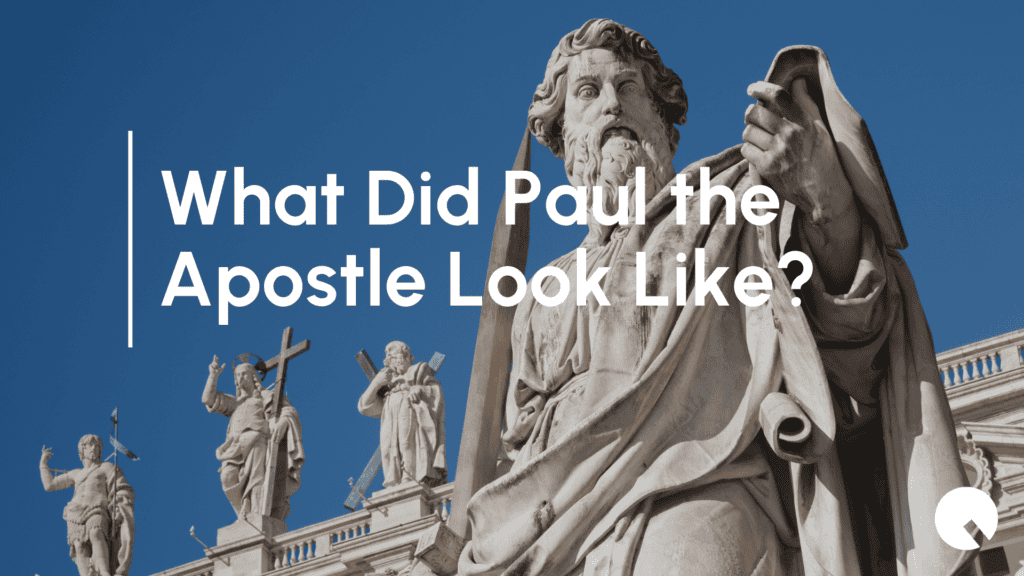When we think of saints and historical figures like Paul the Apostle, it’s easy to envision the idealized images we often see in medieval and Renaissance art. But Paul, a man whose teachings shaped Christianity, was more than a two-dimensional figure. His physical appearance—described in early Christian writings as unimpressive by some—offers an intriguing glimpse into who he really was. While the Bible gives us little information about Paul’s appearance, historical sources and descriptions provide us with enough to piece together a picture of this influential apostle.
In Nobody Liked Paul, Matthew Larsen explores Paul’s life and environment, transporting viewers to the places where Paul preached and lived. This article builds on that by offering insight into what Paul may have looked like, drawing from early descriptions and archaeological findings.
Descriptions of Paul in Historical Texts
Although the Bible doesn’t provide detailed descriptions of Paul’s appearance, other early Christian sources do. One of the most famous accounts comes from the Acts of Paul and Thecla, a 2nd-century apocryphal text that describes Paul as “a man small in size, with a bald head and crooked legs, in a good state of body, with eyebrows meeting and nose somewhat hooked, full of grace.” This vivid description contrasts with the heroic images of Paul we might see in church art, but it likely reflects a more authentic representation of how Paul was perceived during his lifetime.
From this description, we can imagine Paul as a man of shorter stature, likely with Mediterranean features such as dark hair, olive skin, and a prominent nose. His “crooked legs” and “bald head” might suggest that he did not conform to traditional standards of attractiveness, which is noteworthy given that Paul himself acknowledges his perceived physical shortcomings. In 2 Corinthians 10:10, Paul quotes his critics: “For some say, ‘His letters are weighty and forceful, but in person he is unimpressive and his speaking amounts to nothing.’”
Paul’s Physical Attributes and Health
Paul’s letters occasionally hint at physical ailments. In Galatians 4:13-15, he refers to a “bodily illness” that led him to preach in the region, and in 2 Corinthians 12:7, Paul mentions a “thorn in the flesh,” which some scholars interpret as a reference to a chronic condition, perhaps related to his eyesight. Some even speculate that Paul may have been partially blind, given his mention of writing with large letters in Galatians 6:11.
These health issues may have affected both Paul’s ministry and his interactions with the communities he visited. Despite his ailments, Paul was a determined and resilient man, traveling vast distances to spread the gospel. His physical challenges, rather than hindering him, may have added to his spiritual authority. Paul’s ability to endure suffering, as described in his letters, became a testament to his faith and commitment to the Christian message.
What Did People from Tarsus Look Like?
Paul was born in Tarsus, a city in the region of Cilicia, which is modern-day southern Turkey. In the first century, Tarsus was a melting pot of various cultures, including Greek, Roman, and local Anatolian influences. The typical appearance of people from this region likely included Mediterranean characteristics such as dark hair, olive-toned skin, and brown eyes. As a Roman citizen, Paul may have dressed in Roman-style clothing, particularly when he traveled in Roman territories, though he would have also been familiar with Jewish attire.
While we have no concrete depictions of Paul’s clothing, as a traveling preacher and tentmaker, Paul likely wore simple, functional garments appropriate for his lifestyle. He would have donned a tunic and cloak, and possibly a head covering, depending on the region he was in. His physical appearance, combined with his attire, might have helped him blend in with the diverse populations of the cities he visited.
How Paul’s Appearance Impacted His Ministry
Paul’s unassuming physical appearance may have initially caused some to underestimate him. In the Greco-Roman world, public speakers and leaders were often judged by their physical presence and oratory skills. Paul himself seems aware of these expectations, acknowledging his critics who found his physical presence lacking. However, Paul’s ministry was grounded in his message, not in his looks. His letters reveal a man who, despite his perceived weaknesses, spoke with authority and conviction.
Interestingly, Paul’s “crooked legs” and small stature might have made him more approachable to the marginalized communities he ministered to. His humble appearance could have helped him relate to those who were often overlooked by society. Paul’s teachings emphasized spiritual strength over physical might, and his own life was a testament to that belief.
Biblical Moments That Reveal Paul’s Appearance
Though the Bible doesn’t provide a detailed account of Paul’s looks, certain passages give us insight into how he might have been perceived by those around him. In Acts 14:8-10, Paul heals a man who had been crippled from birth. After witnessing this miracle, the people of Lystra mistake Paul and his companion Barnabas for gods, suggesting that despite Paul’s ordinary appearance, his actions had a profound impact on those who encountered him.
Paul’s appearance, health, and background also shaped his ministry. His ability to endure physical hardships, such as the stoning he survived in Lystra (Acts 14:19) and his multiple imprisonments, demonstrated his resilience and dedication to spreading the gospel. His physical trials became part of his spiritual journey, and his sufferings were often framed as evidence of his faithfulness to Christ.
A Real Picture of Paul
Paul the Apostle may not have been the imposing figure many imagine, but his legacy is far greater than his physical appearance. Described as small, bald, and possibly frail, Paul’s physical attributes didn’t hinder his ability to connect with people across the Roman Empire. His message of grace, faith, and salvation transcended the limitations of his body, and his influence on Christian theology endures to this day.
For a deeper exploration of Paul’s life, appearance, and ministry, Nobody Liked Paul season 1 and season 2 offer a rich perspective, combining archaeology, history, and theology to bring Paul’s world to life. By understanding what Paul looked like, we can appreciate the man behind the message—a man who, despite his imperfections, shaped the course of history.
Sign up for a free trial of QAVA to watch both seasons of Nobody Liked Paul








